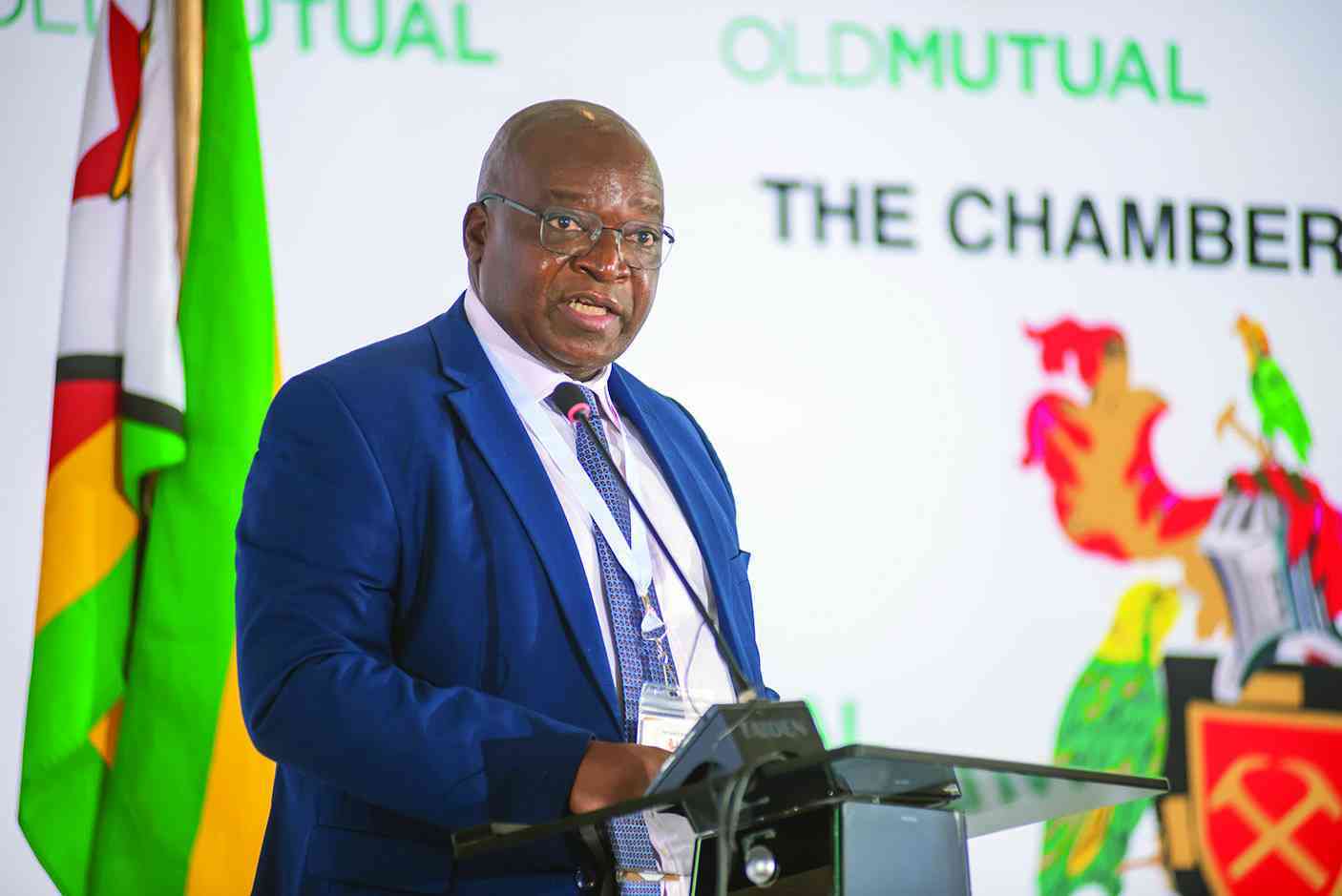ZIMBABWE’S mining industry is projecting strong recovery next year, with the Chamber of Mines of Zimbabwe (CoMZ) forecasting exports of US$6,5 billion and sector growth of over 10%.
Growth will mainly be driven by firmer global commodity prices and new projects in key sub-sectors, according to the chamber.
CoMZ chief executive officer Isaac Kwesu told delegates at the just ended Association of Mine Managers of Zimbabwe annual conference in Victoria Falls that the rebound in gold, lithium and platinum group metals (PGMs) would anchor earnings in 2025 and 2026.
“In the outlook, the mining sector is expected to grow by 5,6% this year, on the basis of new and ongoing special projects in the gold and coal sectors,” Kwesu said.
“Exports are expected to surge to a record US$6 billion in 2025, primarily on the strength of gold prices.
“We also expect export earnings to surpass US$6,5 billion next year, which will be another record.
“There is bullish confidence that next year will be a better year if all challenges are addressed.”
Gold has been the biggest driver of optimism. Prices have surged by more than 50% since January to US$4 051 per ounce, with some forecasts placing the metal at US$4 900 by the end of 2026.
In response, government has rolled out incentives to boost output and deliveries to Fidelity Gold Refinery (FGR), especially from the small scale sector, which now dominates production.
Under the latest measures, small scale miners can retain 100% of their forex earnings and earn an additional 5% bonus for every 500 grammes delivered to FGR.
Lithium and PGMs, which faced depressed prices in 2024 and early 2025, are expected to stage a recovery next year as global supply tightens.
“Preliminary information from our State of the Mining Industry Survey indicates that the sector may grow by more than 10% next year,” Kwesu said. “
Growth will be broad based across gold, PGMs, lithium, coal and ferroalloys.
Kwesu said mining remains the backbone of the economy, contributing around 14% to the gross domestic product and exerting strong multiplier effects.
“For every dollar that our industry generates, three additional dollars are created in other related industries,” he said. “And for every job in mining, three more jobs are created along the value chain.”
Capacity utilisation across the sector averaged 84% in 2024, and is expected to rise to 90% in 2026 as more projects ramp up.
“Current indications suggest capacity will stay above 90% throughout the year,” he added.
Mining also remains a critical revenue source for Treasury. The sector accounts for nearly 19% of government revenue and over 65% of Zimbabwe’s foreign direct investment inflows.
The sector employs more than 50 000 formal jobs and over 500 000 livelihoods when artisanal and small scale miners are included.
But despite the optimism, structural challenges continue to weigh down operations.
Power supply remains the biggest threat, with the industry facing frequent outages even on dedicated power lines.
Kwesu urged government to resolve these bottlenecks to sustain the momentum building in the sector.
Meanwhile, FGR general manager Peter Magaramombe told the same event that they expected gold deliveries to rise to 45 tonnes by year-end, exceeding initial projections of 40 tonnes, as miners look to cash in on soaring gold prices.
Since the start of the year, the gold price per ounce has surged by over 50% to US$4 051,61.
Initially, FGR had projected deliveries of 40 tonnes, which it has now revised to 45, surpassing 2024’s 36 tonnes.
“The current monthly gold delivered average is four tonnes per month. Assuming that this trend is maintained for the remaining period, and in terms of the remaining period, we are saying from November 20 to December 31, 2025, we are expecting an additional five tonnes of gold,” Magaramombe said.
“With this hope, for the remaining period, we have projected that Fidelity will close the year at 45 tonnes of gold, surpassing the set target of 40 tonnes by five tonnes.”
At current gold prices, this translates to exports for the year worth US$5,85 billion.
According to the latest data, small-scale producers delivered more than 70% of the gold deliveries in the first half of the year, with a haul of 14,56 tonnes.
This was attributed to better incentives for the yellow mineral, including 100% forex retention and the payment of 5% per 500 grammes delivered to FGR.
“The trend shows that gold deliveries grew by an average of 29% during the period under review,” Magaramombe said.
“We recorded a total of 29,6 tonnes in the year 2021, which grew rapidly to a current record of 40 tonnes as of November 20, 2025.”
He said the gradual increase in gold deliveries is due to supportive government policies, concerted efforts to stabilise the macroeconomic environment, enhanced transparency in payments and efforts by the government to formalise the artisanal and small-scale mining sector.
American multinational investment bank and financial services company, Goldman Sachs, forecasts the gold price to reach US$4 900 per ounce by the end of 2026.
“Fidelity takes a conservative focused approach of US$4 600 per ounce of gold, being the average gold price forecast for the year 2026 using the three reputable institutions’ predictions,” Magaramombe said.
“While the gold price is not the only determinant factor in terms of driving growth in gold deliveries, the positive influence of bullish gold prices cannot be ignored.
“Based on this, the total gold deliveries for the year 2026 are projected at 50 tonnes. This growth represents an 11% growth rate, taking into consideration the 45 tonnes projected to be delivered in the year 2025.”
Gold is Zimbabwe’s biggest mineral export. – The Standard
